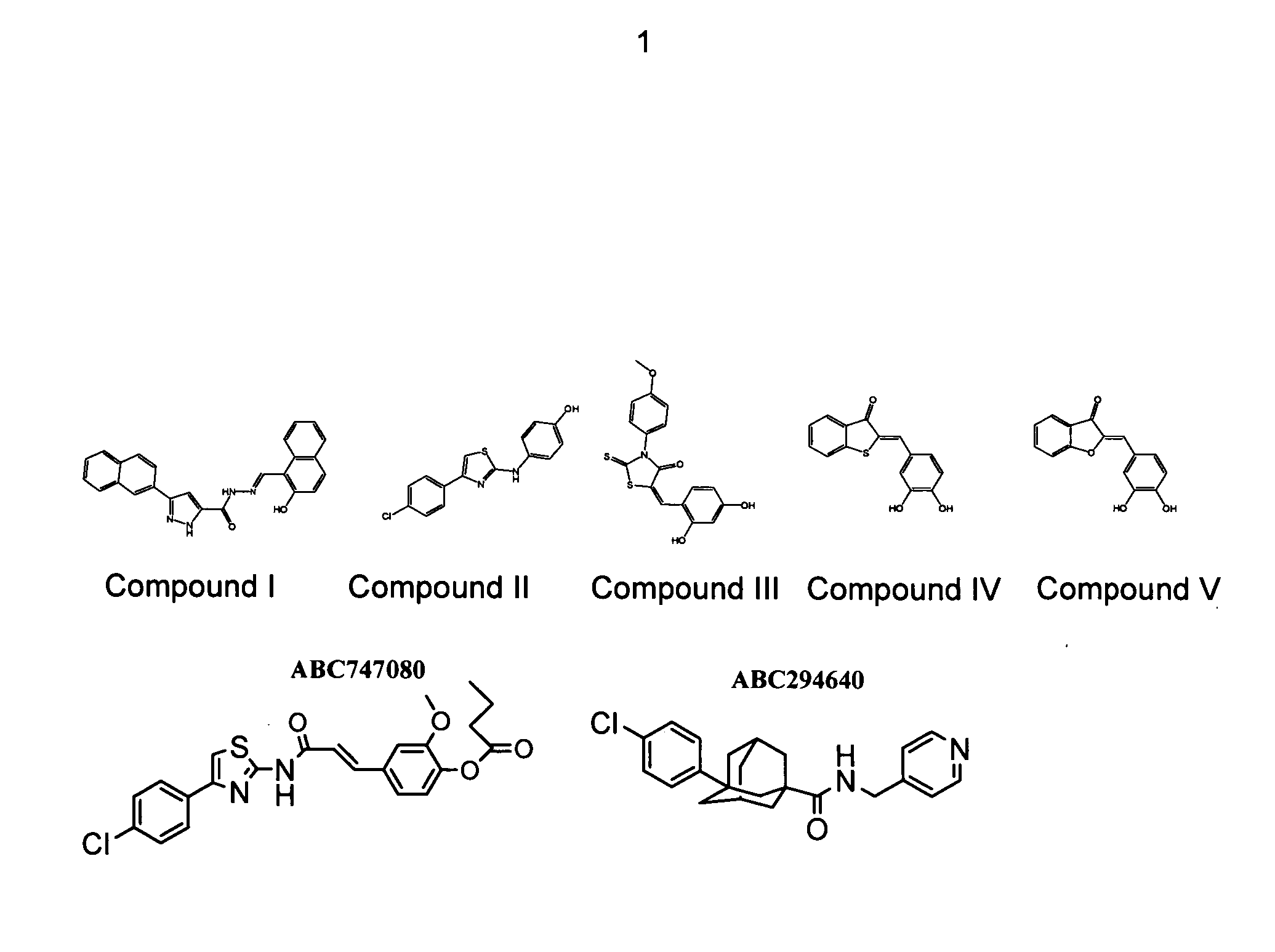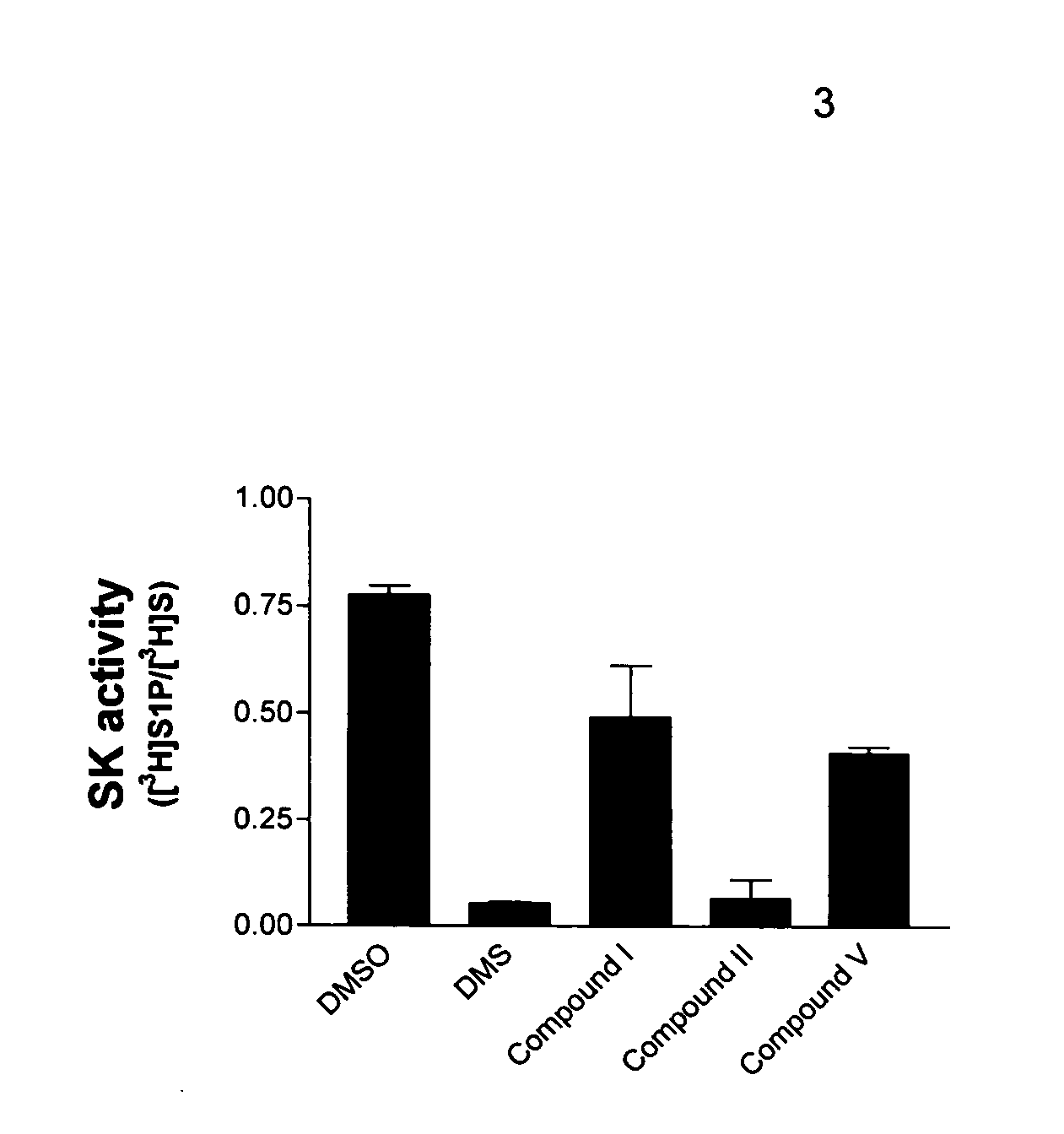Methods for the treatment and prevention of angiogenic diseases
a technology for angiogenic diseases and angiogenic sclerosis, which is applied in the field of angiogenic sclerosis treatment and prevention, can solve the problems of retinal angiogenesis development, unfavorable patient treatment, and disease progression, and achieve the effects of reducing the level of fitc-bsa leakage, reducing and increasing the amount of fitc-bsa leakage in the retina
- Summary
- Abstract
- Description
- Claims
- Application Information
AI Technical Summary
Benefits of technology
Problems solved by technology
Method used
Image
Examples
example 1
Identification of SK inhibitors.
[0050] An assay for screening for inhibitors of SK has been established (French et al., Cancer Res 63: 5962 (2003)). A chemical library totaling approximately 16,000 compounds was screened for inhibition of SK. Representative active compounds from four chemotypes of SK inhibitors, designated herein as Compounds I-IV, are shown in FIG. 1. The compounds ABC747080 and ABC294640 (FIG. 1) also inhibit SK.
example 2
Methods for in vitro studies.
[0051] Cell Culture. Primary cultures of bovine retinal endothelial cells (RECs) were isolated as previously described (Maines et al., Neuropharmacology 49: 610 (2005)). Human RECs were purchased from Cell Technologies (catalog number ACBRI181, Kirkland, Wash.) and cultured under identical conditions as those described for bovine RECs. Briefly, the cells were maintained in growth medium consisting of Minimum Essential Medium with D-valine supplemented with 20% fetal calf serum (Gibco, Rockville, Md.), 50 μg / mL of endothelial cell growth supplement (Vec Technologies, Rensslar, N.Y.), 16 U / mL heparin (Fisher Scientific, Pittsburg, Pa.), 0.01 mL / mL MEM vitamins and glutamine (Sigma, St. Louis, Mo.), and 0.02 mL / mL antibiotic / antimycotic (Gibco, Rockville, Md.). The cells were plated on a 25 cm tissue culture flask precoated with fibronectin (Sigma, St. Louis, Mo.) at 2 μg / cm2 and were grown in a humidified incubator at 37° C. The medium was removed and fr...
example 3
Expression and activity of SK in RECs.
[0056] The expression of SK in bovine and human RECs was analyzed by immunoblotting of whole cell lysates using polyclonal antibodies that cross-react with SK from multiple species. Bovine RECs contained high levels of SK protein, exceeding that of endothelial cells from rat brain cortex and JC murine mammary carcinoma cells (ATCC number CRL-2116). Similarly, several preparations of human RECs consistently expressed high amounts of SK, demonstrating that endothelial cells from multiple species express this enzyme.
PUM
 Login to View More
Login to View More Abstract
Description
Claims
Application Information
 Login to View More
Login to View More - R&D
- Intellectual Property
- Life Sciences
- Materials
- Tech Scout
- Unparalleled Data Quality
- Higher Quality Content
- 60% Fewer Hallucinations
Browse by: Latest US Patents, China's latest patents, Technical Efficacy Thesaurus, Application Domain, Technology Topic, Popular Technical Reports.
© 2025 PatSnap. All rights reserved.Legal|Privacy policy|Modern Slavery Act Transparency Statement|Sitemap|About US| Contact US: help@patsnap.com



